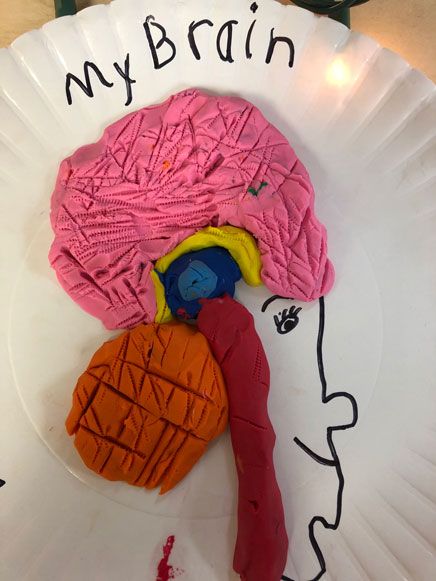

The Brain is the Boss of the Body
Source/Author: First Grade Team
October 23, 2020
First graders at Shorecrest Preparatory School are learning that the human body is pretty amazing -- and the brain is the boss of it all!
Students learned that the little, wrinkly, gray, spongey thing at the top of the body does everything to keep us in action. They learned big words like cerebrum, cerebellum, brain stem, hippocampus, amygdala, and more. The cerebrum is the largest part of the brain and has two hemispheres. It controls thinking, problem-solving and learning, the initiation of movement, the five senses, etc. The cerebellum controls balance, planning, and executing movements and plays a big part in motor skills. The brain stem keeps us breathing, tells us when to blink, cough, etc. - things that we need to do but don't think about. The amygdala rules our emotions. The hippocampus helps with storing memories. The students remember that big word by thinking about hippos having great memories.
To pinpoint and remember specific parts of the brain that they were working hard to learn, the young Chargers performed a variety of experiential activities such as drawing, painting, creating with clay, reading and writing stories, balancing on a line, hopping on one foot, and more. They measured their heart rate while at rest and after they jogged. The brain controls it all!
Students learned that the little, wrinkly, gray, spongey thing at the top of the body does everything to keep us in action. They learned big words like cerebrum, cerebellum, brain stem, hippocampus, amygdala, and more. The cerebrum is the largest part of the brain and has two hemispheres. It controls thinking, problem-solving and learning, the initiation of movement, the five senses, etc. The cerebellum controls balance, planning, and executing movements and plays a big part in motor skills. The brain stem keeps us breathing, tells us when to blink, cough, etc. - things that we need to do but don't think about. The amygdala rules our emotions. The hippocampus helps with storing memories. The students remember that big word by thinking about hippos having great memories.
To pinpoint and remember specific parts of the brain that they were working hard to learn, the young Chargers performed a variety of experiential activities such as drawing, painting, creating with clay, reading and writing stories, balancing on a line, hopping on one foot, and more. They measured their heart rate while at rest and after they jogged. The brain controls it all!
























